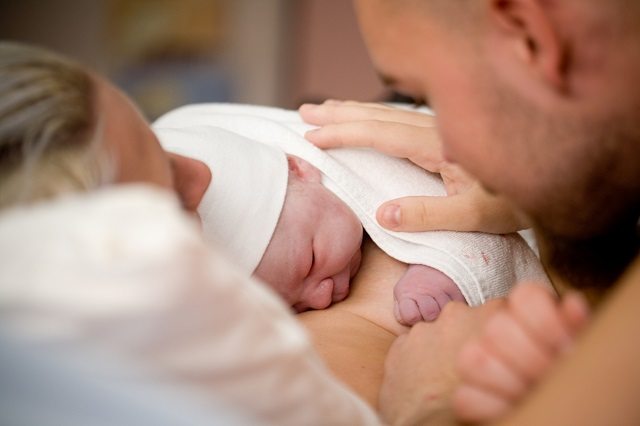Hypnobirthing enthusiasts believe that labour needn’t involve agony and complications. Instead they believe that it can actually be a pleasurable experience. PHOEBE DOYLE asks if hypnobirthing really can take the fear out of childbirth.
What is hypnobirthing?
Hannah Hatherell had a terrible and lengthy first labour. “The experience left me feeling as though I had been hit by a bus and I knew I never wanted to experience anything like that again. When I did become pregnant for the second time, I’d already heard about the benefits of hypnotherapy and couldn’t wait to find out how I could use this to my advantage during childbirth.”
What Hannah learned challenged everything she knew about labour. “One woman on my training course told me that if she could give birth for a living then she would do it; she simply loved the experience.” Although Hannah initially thought this woman was mad, she then learned that if you can get rid of the fear of childbirth, then the pain will also subside. “The benefits for me were many,” she says. “No stitches, a fast and dignified labour, and a quicker recovery” she lists. Hannah was so touched by her experience that she now teaches expectant parents the techniques.
1. Growing recognition
Maggie Howell is a hypnobirthing instructor, and she stresses that using the techniques are not a new fad. “The use of hypnosis has actually been around for centuries, with many traditional cultures using similar methods,” she explains. “What we use today were developed in the 1920s in the USSR, where it was used in many hospitals.” Since then, the popularity of hypnosis has soared and there are now several specific programmes being used. One of the most popular is hypnobirthing, which is a complete antenatal course teaching simple but specific self-hypnosis, relaxation, and breathing techniques. Hypnobirthing aims to make labour calm and positive with few medical infringements.
Are you in the final trimester? Read here for the signs that labour is coming on.
2. The fear factor
The theory behind hypnobirthing is that women are often incredibly fearful and anxious during labour. And that it’s these emotions that are responsible for making childbirth painful and difficult. A recent survey found that eight out of ten pregnant women actually feel terrified about their impending childbirth experience. “Hypnobirthing teaches parents-to-be that birth is nothing to be afraid of and that it is a normal, natural procedure,” says Hannah. In order to do this, practitioners start by teaching the mechanics of childbirth. “Firstly, we teach them what happens with their muscles within the uterus. There are two sets of muscles that need to work together in order to open the cervix in preparation for birth. It’s vital that the mother is relaxed in order for the muscles to work in harmony.”
In the hypnobirthing programmes, instructors work to prepare the mind and the body using breathing, visualisation, and deepening techniques. The birthing partner is present in each session and taught how to assist the mother in all of these. “Partners are also instructed in light touch massage, which releases the body’s own natural endorphins, and block out stress hormones,” Hannah explains.
3. Does it really work?
Statistics from clinical research seem to support claims that hypnobirthing works. In fact, one piece of research which reviewed over 2,000 births found that mothers who use hypnotherapy:
- Have less-reported pain
- Require less medical intervention (pain relief, forceps, etc)
- Experience shorter labours
- Are less likely to have a Caesarean section
- Report a higher level of satisfaction with their birth experience
As a result, more and more midwives are recommending hypnotherapy as a way to have a positive birth experience. Whilst instructors stress that self-hypnosis is not magic, they believe it enables women to feel more confident and relaxed. This gives them a far better chance of having a positive birth.
maternity&infant
Originally posted 2018-01-04 09:49:16.









